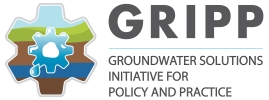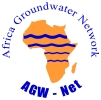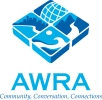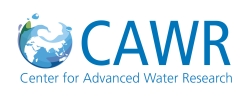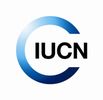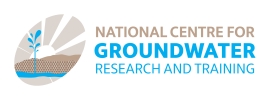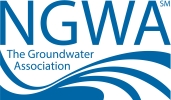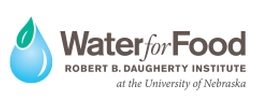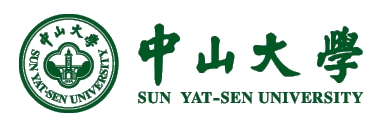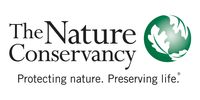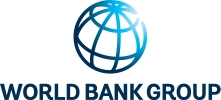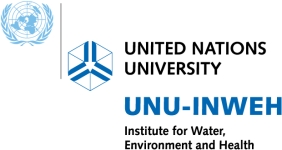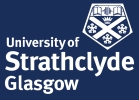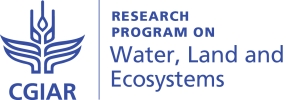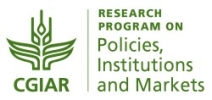An integrated MAR system with several sources of water and multiple benefits
What is the Alcazarén-Pedrajas MAR scheme?
The Alcazarén-Pedrajas managed aquifer recharge (MAR) scheme, located in Valladolid, north central Spain, is an integrated and multi-functional water and ecosystem management intervention with benefits for nature and local communities. A major driver for its implementation was the declaration of the underlying aquifer as overexploited due to agricultural expansion. The key components of the scheme consist of enhanced underground water storage and passive pre-treatment of reclaimed source water during retention through the scheme and in the unsaturated zone. Importantly, the system provides local end-users with additional water for irrigation as well as enhanced ecosystem services downstream by means of wetland support and water availability for productive uses (2).
Since the scheme’s inception in 2011, a key design feature was the triple origin of the source water: (1) a wastewater treatment plant (WWTP) with advanced secondary treatment to enable reuse in the rural area of the reclaimed water (on average, 94% of total flow of about 0.35 million cubic meters (Mm3)/year); (2) an 8-km pipeline diverting water by gravity from the Pirón River in winter (on average, 3%), retaining a minimum flow rate in the river, as prescribed by the River Basin Authority for environmental flows; and (3) a canal conveying rainwater runoff from rooftops in the adjacent Pedrajas village (on average, 3%) to the “connection point” where the three sources merge (Figures 1, 2 and 3a).
The combined flow is then conveyed through a 2-km pipeline, carrying the mixed water to an excavated earthen infiltration canal (Figure 3b), which crosses irrigation fields in upstream areas, hence recharging the underlying sandy and unconfined aquifer, which has a water table at a depth of about 14 m. The pipeline ends in a system of abandoned riverine sand pits excavated during the construction of the village (Figure 3c), which are reused as artificial wetlands and infiltration ponds, and function as a spill-over mechanism for the infiltration canal [1]. The services provided by this step are multi-functional, with the sand pits purifying additional water through natural means, while also helping restore the landscape, and support biodiversity and wildlife. Finally, the infiltration ponds are connected to another stream that can distribute any surplus water for downstream uses. The water percolating into the ground is naturally filtered through the vadose zone (the unsaturated layer of the subsurface) and the aquifer as it flows downstream.
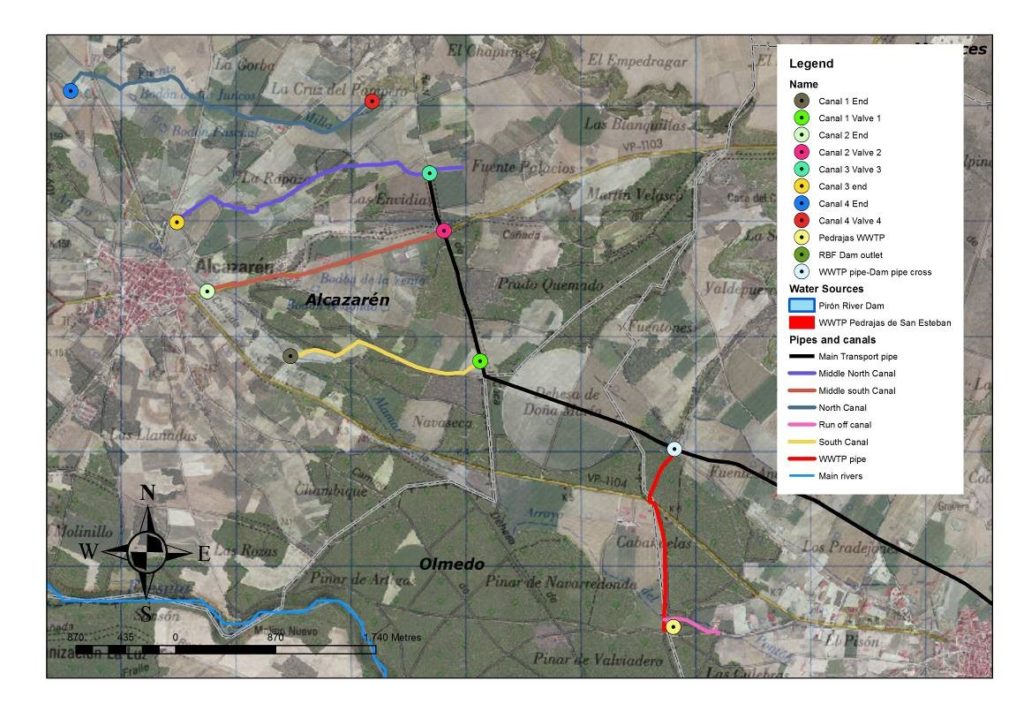
Figure 1. Cartographical mock-up of the MAR facilities in the Alcazarén area (source: TRAGSA).
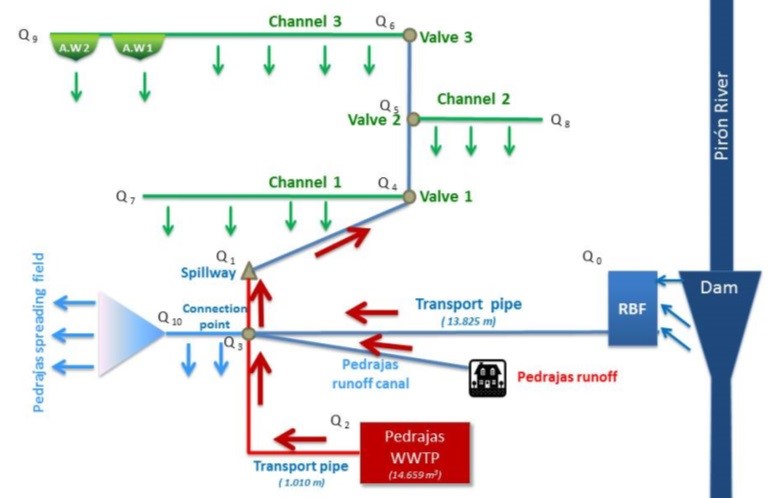
Figure 2. The layout of the Alcazarén-Pedrajas MAR scheme indicating components and water transfers (source: Modified from Junta de Castilla y León-Tragsatec 2011 [2]). Note: RBF: River Bank Filtration. AW: Artificial Wetland. WWTP: Wastewater Treatment
The activity is under constant monitoring and surveillance by the Alcazarén Irrigation Community, Water Authority (Confederación Hidrográfica del Duero) and Regional Administration (Junta de Castilla y León) for the period 2014-2017, and also by the Managed Aquifer Recharge Solutions (MARSOL) project (EC-FP7 call). To optimize the system, significant investigations and experiments were conducted (e.g., on the hydrogeology, clogging during infiltration, and water quality improvements during water flow along conduits and canals, especially for nitrate, some heavy metals, and turbidity) [2].
Socioeconomic and institutional support
Stakeholders benefitting from the MAR intervention, which include farmers and agro-industry workers, are organized in an Irrigation Community (IC) established prior to the MAR project with 190 members. The IC farmers irrigate 400 out of 1,593 ha of cultivated land through the MAR intervention. The IC solves members’ problems through a management board of user representatives and covers collective expenses through an annual fee. The IC already had a relevant role when the aquifer was provisionally declared overexploited in 2000, as Spanish regulation requires all farmers using overexploited aquifers to associate in ICs. The board of the IC becomes the interlocutor with the public administration and the agents of charge in meeting requests from the authorities.
Initially, most of the MAR scheme was financed by the regional government as an envelope of “environmental expenses.” The total cost of the feasibility studies and construction of the MAR system was EUR 2.2 million. Once built, the scheme was entrusted to the IC, whose members’ incentive consists of the benefits from irrigation development, with an agreement that users would undertake maintenance of the system. The maintenance costs amount to about EUR 0.05/m3 [2].
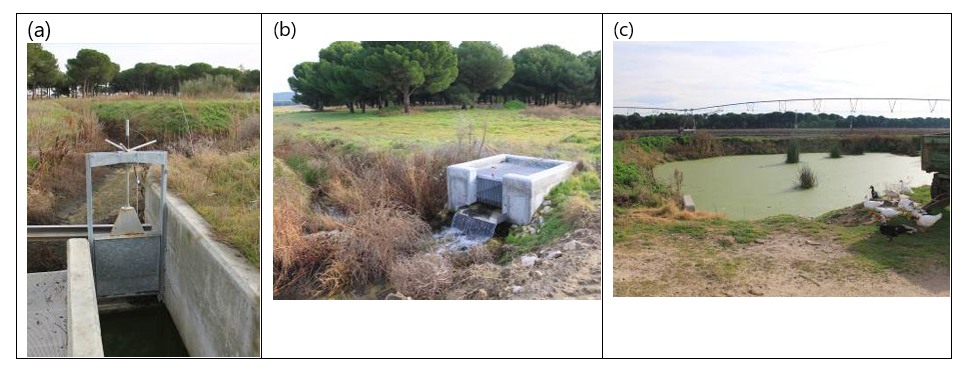
Figure 3. The Alcazarén-Pedrajas MAR scheme: (a) connection point where the flows from the WWTP, rooftop runoff and Pirón River diversion converge; (b) valve where the pipeline feeds the infiltration canal; and (c) previous sandpit reused as infiltration pond (source: TRAGSA).
Experience from the intervention and next steps
The impact on rural development has been significant in terms of improved farmer incomes and agricultural output [1]. The average recharge volume represents 26% of the total water volume used for irrigation in the irrigated area [3]. Since the activity began, the water table has risen by around 0.75 m from 2012 to 2016. Energy savings from pumping close to the infiltration canals, due the higher groundwater table, are estimated at 18% [3].
The MAR scheme initially applied the principle of “dilution as a solution to pollution,” i.e., mixing different waters from different sources to comply with Spanish regulations for water reuse and MAR (Royal Decree 1620/2007). The main risk and real test arose in the summer, when the only available source of water was the WWTP (except after heavy summer storms). As a result, the unsaturated aquifer was the only medium functioning as a purifying system for any remaining contaminants in the reclaimed water. In this situation, not all water quality standards required by law for MAR were met at any given time. Farmers either sent the treated outflow from the WWTP directly back to the river as a spill within legal thresholds or continued recharging the aquifer, with water quality levels very close to the maximum allowed limits, bearing the risk of potential groundwater pollution. Although this second option was barely used, a slight increase of total organic carbon (TOC) was detected in two piezometers near the head of the MAR canal in one instance.
This experience made the stakeholders aware that the system needed to be reassessed. Otherwise, the water in the aquifer would increase in TOC concentration over the long term. The technical solution applied was an improvement to the natural soil-based purification and filtration process. A bio-filter unit was added close to the connection point, which was filled with natural material from available and cheap local resources (e.g., pebbles, pinecones and bark) retaining TOC and other contaminants (Figure 4). This improved the groundwater TOC levels as well as 15 additional parameters analyzed [4].
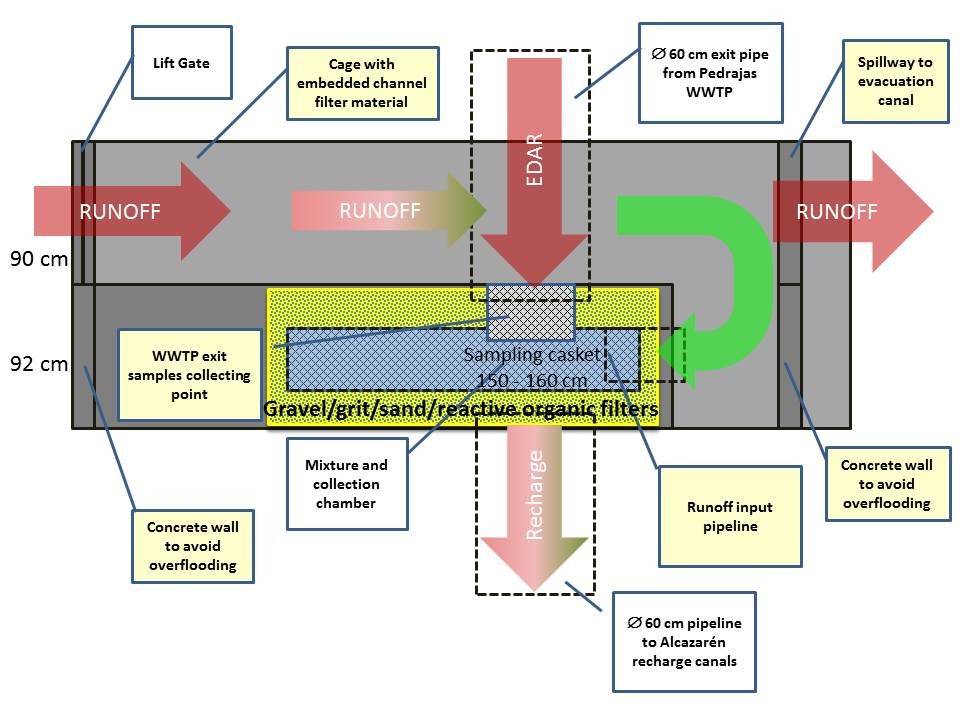
Figure 4. Reactive bio-filter system incorporated at the connection point where the three different water streams merge (source: TRAGSATEC).
Some conflicts and concerns, voiced by fisherfolk and environmentalists, have arisen following the diversion of water from the Pirón River, which temporarily suspended the river flow concession to the MAR scheme, pending a court decision. This has caused a reduction of water available for the scheme (the best quality water available for the dilution process). As a result, the slogan “technical solutions as a solution to pollution” has replaced the previous slogan “dilution as a solution to pollution,” and a large investment was made to expand and upgrade the WWTP. Cultural and social barriers against wastewater reuse in the area are waning, as the local population “lose the fear” of reclaimed wastewater reuse [4]. Another lesson learned is that the participation of stakeholders, specifically farmers and other actors in water management, has a direct and positive impact on public acceptance of MAR and on the “contagious effect” on other irrigation communities.
[1] MARenales movie produced by MARSOL team: https://www.youtube.com/watch?v=Dw22rcEQdiw
[2] Junta de Castilla y León-Tragsatec (2011) Hydrogeological study of artificial recharge of the Plio-Quarternary aquifer in the villages of Alcazarén, Pedrajas de San Esteban, Íscar, Olmedo and Villaverde de Íscar (in Spanish: Estudio hidrogeológico para la recarga artificial del acuífero pliocuaternario en los términos municipales de Alcazarén, Pedrajas de San Esteban, Íscar, Olmedo y Villaverde de Íscar). Unpublished internal document available at JCyL library.
[3] Fernández Escalante, E. and San Sebastián Sauto, J. (2017) Managed aquifer recharge of the aquifer Los Arenales, Castilla y León, Spain – technical solutions for rural development (in Spanish: La recarga gestionada en el acuífero Los Arenales, Castilla y León, España. Soluciones tecnológicas aplicadas al desarrollo rural. In: Manejo de la recarga de acuíferos: un enfoque hacia Latinoamérica. Chapter 22. IMTA, México. https://www.imta.gob.mx/biblioteca/libros_html/manejo-recarga-acuiferos-ehl.pdf
[4] Fernández Escalante, E., Calero Gil, R., Villanueva Lago, M., San Sebastián Sauto, J., Martínez Tejero, O., and Valiente Blázquez, J.A. (2016) Appropriate MAR methodology and tested know-how for the general rural development. MARSOL Project Deliverable 5-3. http://www.marsol.eu/35-0-Results.html.
Enrique Fernández Escalante1 and Jon San Sebastián Sauto2
1 Empresa de Transformación Agraria (TRAGSA). Madrid, Spain. Email: efernan6@tragsa.es
2 Tecnologías y Servicios Agrarios (TRAGSATEC). Madrid, Spain
Acknowledgements
The authors are grateful to the Alcazarén and Pedrajas City Councils and Alcazarén Irrigation Community for their valuable support. Also, the civil servants in the Junta de Castilla y León and Duero River Basin Authorities are acknowledged for the support and permissions provided.






